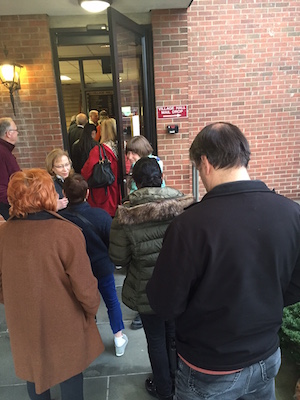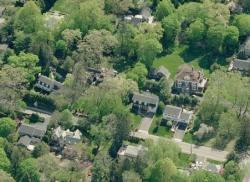Pekarek, Samwick and Veron Elected to Serve as Village Trustees
- Details
- Written by: Joanne Wallenstein
- Hits: 8121
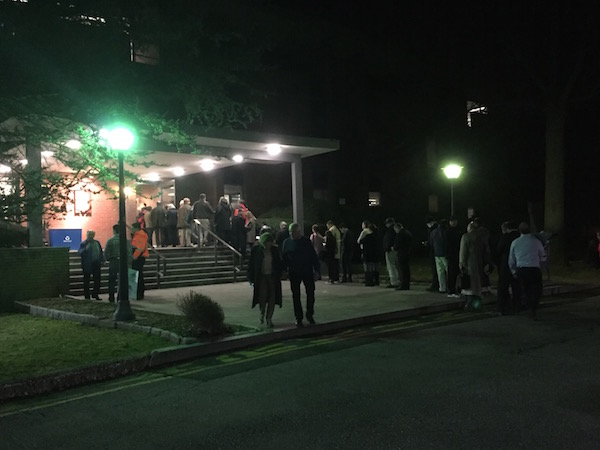 The candidates, friends and families waited until 11:30 pm on Tuesday night to find out the results of a most unusual election in Scarsdale. The contest brought long lines of voters to Village Hall and delays in processing caused some to wait more than half an hour to vote and voting hours to be extended beyond the 9 pm deadline.
The candidates, friends and families waited until 11:30 pm on Tuesday night to find out the results of a most unusual election in Scarsdale. The contest brought long lines of voters to Village Hall and delays in processing caused some to wait more than half an hour to vote and voting hours to be extended beyond the 9 pm deadline.
In the end, Deb Pekarek and Marc Samwick, two trustees who had served first terms were re-elected and Jane Veron was chosen to serve her first term as Village Trustee. Also elected was Village Justice Joaquin Alemany.
Here are the counts - including votes on the absentee ballots:
Village Trustee (3 Positions)
Deb Pekarek 334
Marc Samwick 407
Jane Veron 498
Village Justice
Joaquin Alemany 554
A total of 684 voters came to Village Hall and another 50 absentee ballots were received. Though Seth Ross, received the nomination for Village Trustee from the Citizen's Non-Partisan Party, due to a paperwork problem his name did not appear on the ballot and he lost his bid for the job, receiving 179 votes. Considering that Pekarek's name had to be written-in on the ballot, she received an impressive number of votes.
Why the high turnout? Most years, the election brings out fewer than 250 voters as the candidates that are selected by the CNC run in an uncontested election. In 2015 when Mayor Jon Mark was elected, only 210 votes were cast. However this year, the ballot for Village Trustee had two pre-printed names and a blank space for a write-in vote. The Village Clerk opted not to use electronic voting machines due to the expense, leaving election officials to spend hours hand-counting the paper ballots.
In January, many were surprised when first term trustee Deb Pekarek was not re-nominated by the Citizen's Nominating Committee to serve a second term. A few weeks later the Village Clerk announced that due to a failure to file the necessary paperwork before the February 16 deadline, Seth Ross, who was nominated by the Scarsdale Citizens' Nominating Committee (CNC) to serve as Scarsdale Village Trustee would not appear on the printed ballot.
That left the election in play when voters 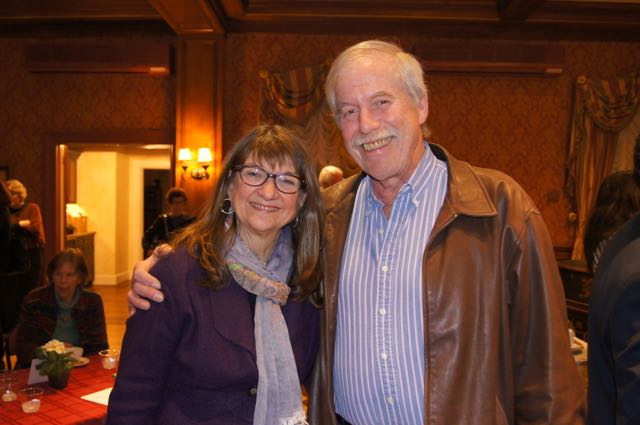 were given a choice of whose name to write-in in the open spot. Many felt that Pekarek should have been selected by the CNC and decided to give her their vote for a second term. Others backed the CNC nominee Seth Ross. The overall tone of the election was civil. Some candidates sent emails reminding friends to vote and campaigned in public venues but there was no rancor. In fact many who attended a reception at the Scarsdale Woman's Club following the election voiced support for all the candidates – and when the results were announced many asked Ross to consider the position again next year.
were given a choice of whose name to write-in in the open spot. Many felt that Pekarek should have been selected by the CNC and decided to give her their vote for a second term. Others backed the CNC nominee Seth Ross. The overall tone of the election was civil. Some candidates sent emails reminding friends to vote and campaigned in public venues but there was no rancor. In fact many who attended a reception at the Scarsdale Woman's Club following the election voiced support for all the candidates – and when the results were announced many asked Ross to consider the position again next year.
Commenting on the results, Jane Veron said, "I am honored and appreciate everyone's support. I am excited to serve." Deb Pekarek said, "I am thrilled to be able to serve. Now we can all get back to work. The turnout was robust and I want to express a heartfelt thanks to everyone who voted. I hope to see Seth return next year. He would be a wonderful member of any board and I hope he will continue to be involved in Village activities." Marc Samwick said, I am proud to be able to serve a second term and continue to work on issues we began and challenges that face the Village."
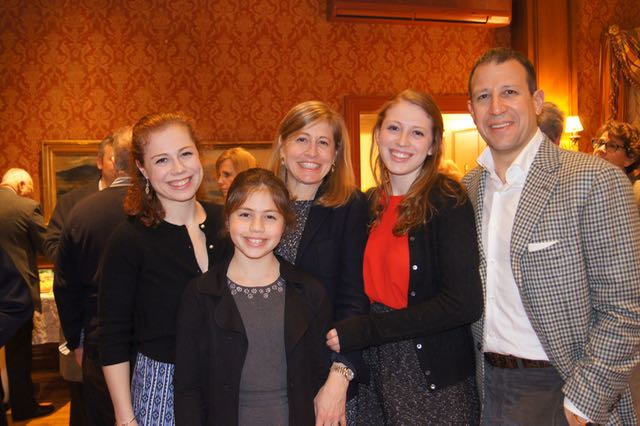
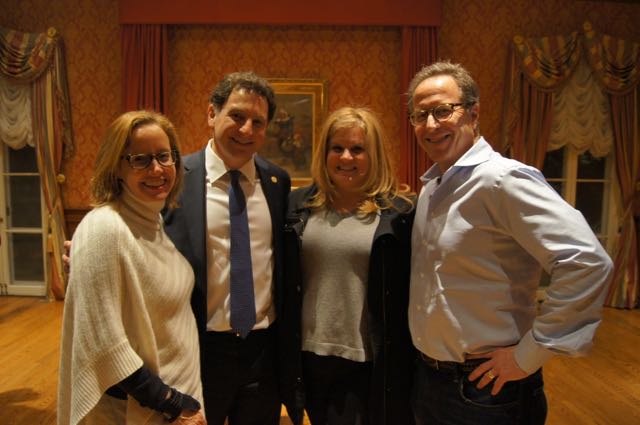
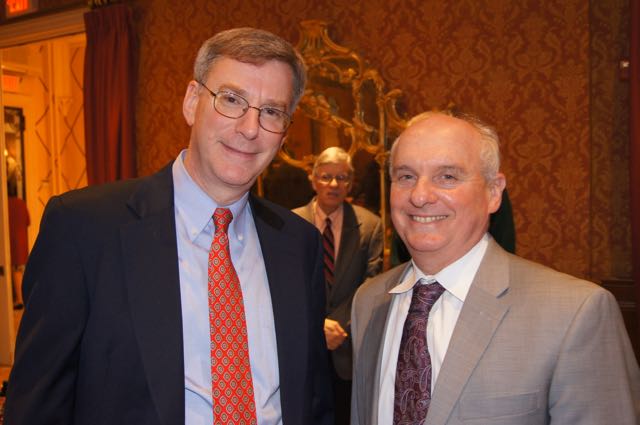
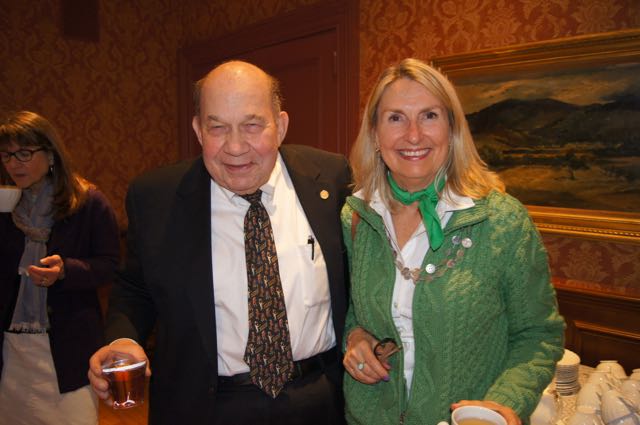
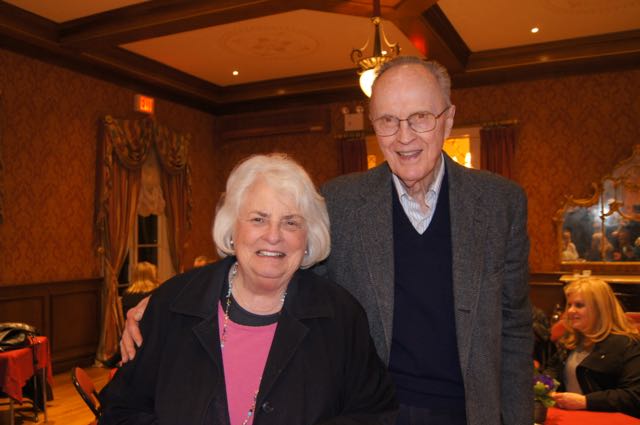
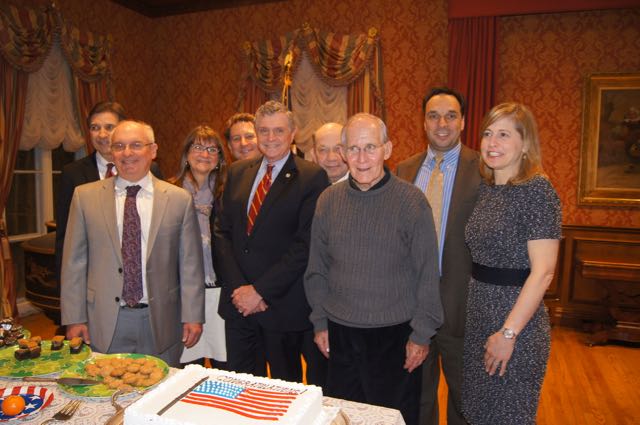
The final counts from the Village Clerk also show many miscellaneous votes:
Here they are:
Village Trustee:
Bob Harrison 6
Robert Berg 3
Mark Roth 2
Douglas Ulene 1
Farley Baker 1
Neil Kanner 1
Mona Longman 1
Jeff Koswalski 1
Kathy Steves 1
Chris Martin 1
Thomas Martin 1
Ross Theal 1
John Bensche 1
Donald Trump 1
Village Justice:
Deborah Pekarek 3
Jeffrey Levin 2
John Leslie 1
Jack Shemtab 1
Marianne Kaplan 1
Note to those who wish to comment: Please make constructive comments, refrain from being derisive and include your name and street address. Thank you.
Vote Today - Tuesday March 15 for Village Trustees and Justice
- Details
- Written by: Joanne Wallenstein
- Hits: 6951
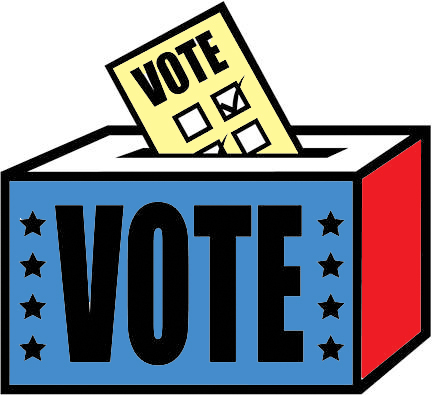 The much-discussed Scarsdale Village election for Village Trustees and Village Justice will be held at Scarsdale Village Hall on Tuesday March 15 from 6 am to 9 am and from noon to 9 pm. For the first time in recent memory the Village will use paper ballots and ballot boxes rather than voting machines.
The much-discussed Scarsdale Village election for Village Trustees and Village Justice will be held at Scarsdale Village Hall on Tuesday March 15 from 6 am to 9 am and from noon to 9 pm. For the first time in recent memory the Village will use paper ballots and ballot boxes rather than voting machines.
Also, this year, there are three open spots for Village Trustee and only two pre-printed names on the ballot as one of the candidates selected by The Citizen's Nominating Committee did not file paperwork before the deadline.
Below is a picture of a sample paper ballot showing where you should write-in the name of the candidate of your choice for Village Trustee.
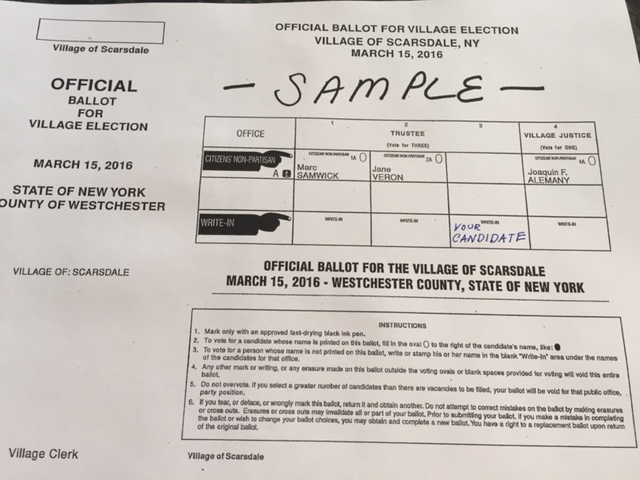
Also please note the following, if you misspell the name of a candidate as long as election inspectors can determine the intent of your vote, it will be counted. You can only vote for a candidate once. According to NYS Election Law if you fill in the same name multiple times on the ballot, only the first marking will count. Candidates will be selected based on their total number of votes. If you circle a candidate's name and write-in another name in that same column, both votes will be void. Certified Westchester County Election Inspectors will count the votes.
So who's running? Here are the people in the running who have identified themselves to us to date: (In alphabetical order)
-Deb Pekarek has served a first two-year term as Village Trustee and her name can be written in on the ballot.
-Seth Ross was nominated by the CNC for a first term but his name does not appear on the ballot. It can be written in.
-Marc Samwick also served a first two-year term trustee and he was re-nominated by the CNC. His name is printed on the ballot.
-Jane Veron was nominated for a first term by the CNC and her name appears on the ballot.
Below, find questions and answers from the candidates:
Deb Pekarek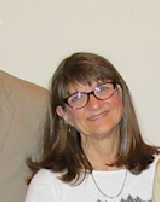
What are the major challenges facing the Village?
Scarsdale's aging infrastructure is the overarching theme, which produces challenging ripples throughout our community. The Board of Trustees has and will continue to consider the Village's needs as they relate to development, sewer improvements, storm water mitigation, water quality, general maintenance and improvements to buildings, while continuing to provide exemplary services to our some 17,000 neighbors and to do so in a fiscally responsible manner looking at current needs and more long term projects.
What past accomplishments in your volunteer service are most proud of?
Last May there was a wonderful community event at the open space between the Library and the High School gravel lot. Over 100 volunteers planted some 300 native trees and shrubs, donated via the NY State Department of Environmental Conservation, Trees for Tribs program, along this watercourse. These beneficial plantings will help to maintain both a healthy waterway and mitigate flooding, as this area is part of a comprehensive storm water mitigation project that includes a detention basin at George Field Park, the Cooper Green rain garden and the stream bank restoration at Harcourt Woods. This project was a true collaboration. The Friends of the Scarsdale Parks has been committed to improve and restore this wetland area and now, with the DEC donation, assistance by the Village Department of Public Works and Village Park and Recreation Department plus all the neighborhood planters, this is the beginning of a truly transformed Harwood Park. I believe that I helped facilitate this project, from making the initial contact with the DEC, identifying the possible grant and then by supporting the need for additional Village assistance. This project fulfills the Villages vision within the Comprehensive Plan, to protect, improve and increase open space...to perpetuate and enhance Scarsdale's Village in a Park character. This is a project that will have lasting benefit to the community. Stay tuned for further improvements.
And the next time you clean out your closets be sure to drop off your castaways at Scarsdale's Recycling Center where we now have a textile recycling bin. After attending a Westchester County Sustainability meeting I gathered information about this opportunity and then presented it to Village staff for review. It was carefully researched and a responsible company was selected and they now maintain the bin and pay for each pound of material collected. This helps keep recyclable items out of the waste stream, provides an additional service to residents, we get a little income while helping the environment.
What are some of your personal goals for your service as a trustee?
I would be honored to continue my service as Village Trustee, working as I have these last two years, by preparing and studying the issues, building effective and collaborative relationships with the members of the Board and the Village staff and encouraging neighbors to get informed, to attend board and committee meetings, or watch via cable or on-line via the Village website http://www.scarsdale.com/CableTV/CableTVStreaming.aspx
and to provide the Board with feedback, in person or via email.
I also believe that the liaison responsibility each Trustee has, provides a vital link with our community on a somewhat less formal basis and keeps us informed about neighborhood events, concerns and the personal, individual effect of our policies.
I would also hope to continue to present viable and cost effective sustainability practices to the Board and the Village for consideration.
What do you like about living in Scarsdale?
The allure of Scarsdale is its beauty, its heritage, its proximity to NYC, wonderful public schools, its non-partisan government system, superb Village services, and the many opportunities to participate as a volunteer...the spirit of giving back - Non Sibi – these are some of the hallmarks of our vibrant community. My husband and I, along with our dog Hemingway and our cat Homer, love our home, have family close by and great friends in the neighborhood. Many weekend mornings we walk with friends from Greenacres to downtown Scarsdale for breakfast and this is both delightful and delicious!
Anything voters should keep in mind when considering their vote?
Vote on March 15, 2016 at Village Hall.
Seth Ross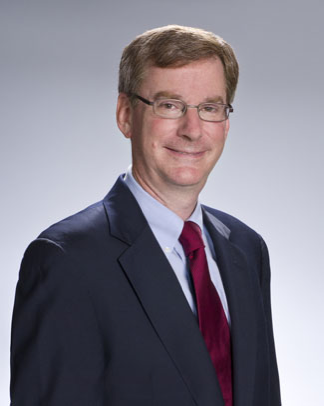
What past accomplishments in your volunteer service are you most proud of?
As Chair of the Procedure Committee I oversaw the election for members of the Citizens Nominating Committee, which meant overseeing the solicitation of candidates -- a real exercise in motivating people to participate in local government and often educating them about the special system that we have here in Scarsdale. I certainly realize that our nonpartisan form of government differs from the institutions that exist at the national and state levels, so it sometimes strikes people at first as odd and even undemocratic, but when people take the time to understand how our system works, and why it works the way it does, more often than not they come to appreciate that it is both democratic and effective. On the Procedure Committee I was a "booster" for the system.
As Chair of the Zoning Board and the Planning Board I had to run meetings in a way that demonstrated to the members of the public who came before us (both applicants and others who would be affected by our decisions) that our consideration of applications was proceeding with integrity and thoughtfulness, that people were being heard, and that the process was fair. Also, of course, I had to do what I could to see that we arrived at the right decisions, but I came to realize fairly quickly that making the right decision is by no means the whole job. I believe that confidence in the decisionmaking process engenders respect for the decisions themselves, and I always did my best to conduct our meetings accordingly.
What are some of your personal goals for your service as a trustee?
First and foremost, I hope to help uphold the standards that past mayors and boards have set and the current mayor and board have continued, both in terms of the quality of decisionmaking and the collegiality and constructive tone of the process. Also, though, interaction with the community is important, and I'd like to do what I can to foster engagement on the part of our citizens. I think that our past and current mayors and trustees have done an excellent job at this, but we still have citizens who feel alienated from the "power structure". There's more work to be done on this score.
What do you like about living in Scarsdale?
To me, what defines Scarsdale above all else, and what I love most about it, is the extent and the quality of our public facilities and services, not only because I use and enjoy so many of those facilities and services myself but because they strengthen the community. The things we share are the things that make the community cohesive. The town's convenient location, interesting and educated population, pleasant and varied neighborhoods, attractive downtown area, and any number of other attributes are also important, but in my opinion no one of those other factors, on its own, sets the tone of the community.
Anything voters should keep in mind when considering their vote?
The unusual circumstances of the upcoming village election have attracted the attention of many people who otherwise might not take the trouble to become involved in local government. This can be a very positive development. Good government in Scarsdale, as anywhere else, requires that citizens be actively involved and exercise their rights intelligently. I wouldn't go so far as to say that I don't care how people vote on Election Day, but the level of participation and the quality of that participation are more important to the community than the outcome of one election.
Marc Samwick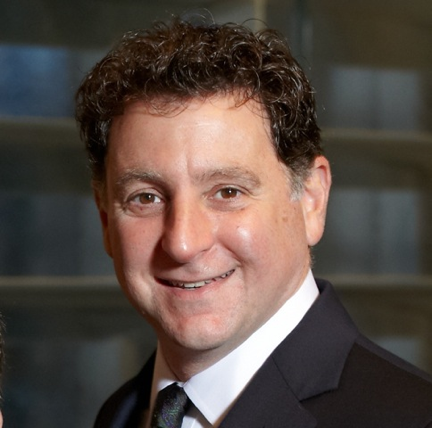
Tell us about your background
I graduated, with honors, from Union College with a BA in Economics. I received an MBA, with honors, from Columbia University Graduate School of Business. I am a real estate investor and developer focusing on properties in New York, New Jersey and Connecticut. Formerly, I worked for Capital Trust, Fleet Bank (now part of Bank of America) and Chemical Bank (now part of JP Morgan Chase). At Capital Trust, I originated mezzanine investments on properties throughout the United States. At Fleet Bank, I worked out problem real estate loans. I completed Chemical Bank's formal credit training program and originated commercial real estate financings.
What are some of your volunteer activities?
Currently, I am a Trustee and Police Commissioner. As Trustee, I chair the Finance and Land Use Committees. I also serve as liaison to the Planning Board, Board of Architectural Review, Chamber of Commerce and Committee for Historic Preservation. I formerly served as chair of the Recreation Committee and liaison to the Advisory Council on Parks and Recreation. I served as an Alternate on the Scarsdale Planning Board. I served on the Board of Scarsdale Little League. One of the highlights of my time on the SLL Board was a program I originated to Coach the Coaches. This program is designed to give coaches a solid base of fundamental baseballs skills to provide the children with a higher level of baseball instruction throughout the entire baseball season. I have coached over 20 baseball teams in Scarsdale. I served on the Finance Committee of Westchester Reform Temple.
I co-authored and taught a case study on complex real estate ownership at Columbia Business School. I also interview potential candidates for admission at Columbia Business School. I was president of a 72-unit homeowners association.
What are you most proud of?
I am proud of the work I did on 2-4 Weaver Street, the residential development at the former Heathcote Tavern. I worked hard to implement a process to provide comfort that the residential development at Five Corners is up to Scarsdale's standards. Specifically, I pushed to have all land use approvals and the a construction monitor in place prior to the Village selling a sliver of land to the developer. This sets in place a process that is designed to produce a building that is consistent with the plans that have been approved by the Board of Architectural Review.
What do you like about living in Scarsdale?
Cynthia and I moved to Scarsdale in 1997 and have discovered first-hand what a wonderful place Scarsdale is to raise our family of three boys, Jason, Oliver and George. While Scarsdale is known for its excellent school system, scenic beauty and proximity to New York City, the warm and caring people that make Scarsdale a community is its real treasure. The Scarsdale community is remarkably involved and giving - with waves of volunteers coming forward to serve and improve our community.
Give us your thoughts on Scarsdale Government:
Scarsdale is very fortunate to have a very talented and committed Mayor, Board and Village staff. I have been very impressed by the Village staff, which is dedicated and professional and contributes significantly to our quality of life. As a recent example, Jason Marra, the former head of Parks, Recreation and Conservation spearheaded the renovation of Hyatt Park. Jason coordinated in-house resources to produce a fantastic community space - from sketching the park design by hand to drawing resources from Benny Salanitro and his team at DPW and Kelvin Guevara at Scarsdale Public TV. Benny and his team worked diligently and creatively, delivering an excellent park at substantial cost savings to the Village. Kelvin produced a video of the park that can be seen at Scarsdale TV's website. There were many others involved in the Hyatt Park renovation as well. One of the main takeaways of this project is the outstanding culture of cooperation and dedication to our community that is fostered by Village Manager, Steve Pappalardo, and all of the department heads. The efficient and cooperative workings of Village staff is something residents don't see every day, yet we benefit greatly from as a community.
One of the most pressing issues facing our community is managing the budget with the pressures to maintain and enhance services while continuing to invest in capital projects and managing the tight revenue constraints coming from Albany and the realities of the current economic environment.
What are some of your personal goals for your service as a trustee?
I look forward to continuing to use my background in finance and real estate as well as my experience in village government to the Village Board to assist in wide range of issues, including land use and budgeting.
Jane Veron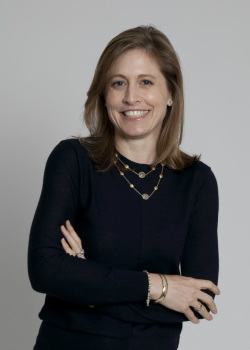
What past accomplishments in your volunteer service are you most proud of?
I have thoroughly enjoyed my civic service to Scarsdale. Over the course of 18 years, I have held a variety of positions including President of the League of Women Voters of Scarsdale, Chair of the Planning Board, Trustee of the Scarsdale Foundation, President of the Fox Meadow Neighborhood Association, Chair of Scarsdale Neighborhood Association of Presidents, Chair of the Scarsdale Bowl, member of the Scarsdale Board of Ethics and of the Executive Committees of Scarsdale Edgemont Family Counseling Service and the Fox Meadow PTA. I found each and every volunteer experience incredibly rewarding and believe that public service can make a lasting positive impact.
As President of the League of Women Voters of Scarsdale, I embraced the responsibility to lead an organization whose core strength is its impartial process. I was incredibly proud to champion the consensus method and to encourage informed dialogue.
As Planning Board Chair, I presided over many heavily debated applications. I recognized the desire to be heard, welcomed public comment, sought out the quiet voices, requested input from Village staff, and encouraged candid deliberation amongst my colleagues. I know that we achieved the best result through collaboration and open-mindedness.
But, I am most proud of what I did at the very beginning, when I reinvigorated the then defunct Fox Meadow Neighborhood Association. I wanted to give voice to our 650 households but knew nothing about local government. I got a copy of the bylaws, sought out mentors, and recruited a diverse board. I encouraged local engagement and shared our views at Village Hall. By partnering with the Village and the schools, we made tangible contributions to our area: we built Willow playground, planted our garden triangle, and obtained the four way stop sign at the high school and one side of the street parking around Fox Meadow School. We created community and what makes me proudest is that the FMNA continues to thrive today.
What are some of your personal goals for your service as a trustee?
I care enormously about Scarsdale and recognize how fortunate I am to belong to this community. I feel a strong responsibility to preserve and protect what makes our village so special. And, equally important, I want to ensure that Scarsdale adapts and evolves so that our village continues to be the best place to live.
My number one priority is to represent the diverse perspectives of our residents. No matter the issue, I will listen carefully, solicit input, evaluate fairly, collaborate, compromise and reach consensus. I believe that the integrity of the process is essential. Smart decisions and fair outcomes depend upon it.
What do you like about living in Scarsdale?
Scarsdale is truly an extraordinary place to live and raise a family and also offers so much to residents of all ages. I love the warm and vibrant community feel and enjoy seeing friends and neighbors in the village, on the fields and courts, and at local events. I sincerely value the friendships I have made, many through my civic involvement, and enjoy working with people across generations. Scarsdale is made better by the incredibly dedicated and talented group of civic volunteers. They have all enriched my life, and I feel extremely lucky to live here.
Anything voters should keep in mind when considering their vote?
As a former League of Women Voters president, I feel passionate about the vote. I am grateful that we live in a village where we can exercise that right, and I encourage wide participation in the election. I truly appreciate people's support and promise to work tirelessly to manage our precious resources to meet our collective interest.
Following the election at 8:30 pm there will be a reception at the Scardale Woman's Club at 37 Drake Road to welcome the newly elected trustees and justice. The event is sponsored by the Scarsdale Citizens' Non-Partisan Party and the public is invited to attend.
CNC Nominee's Name Will Not Appear on Printed Ballot for Village Election
- Details
- Written by: Joanne Wallenstein
- Hits: 8662
 Due to a failure to file the necessary paperwork before the February 16 deadline, the name of one of the candidates nominated by the Scarsdale Citizens' Nominating Committee (CNC) to serve as Scarsdale Village Trustee will not appear on the printed ballot in the election on March 15.
Due to a failure to file the necessary paperwork before the February 16 deadline, the name of one of the candidates nominated by the Scarsdale Citizens' Nominating Committee (CNC) to serve as Scarsdale Village Trustee will not appear on the printed ballot in the election on March 15.
After completing their deliberations, the CNC announced that they had selected Jane Veron, Seth Ross and Marc Samwick to run as their candidates for the Scarsdale Citizen's Non-Partisan Party in the Village-wide election on March 15th. These candidates traditionally run unopposed. Following procedure, members of the CNC circulated petitions to put their candidates on the ballot and these were submitted to Village Clerk Donna Conkling by the February 9 deadline.
However, in order to appear on the ballot each candidate was required to file a certificate of acceptance with Village Clerk Donna Conkling by Tuesday February 16. Though Conkling received the required information from Veron and Samwick, Ross's forms were not provided in time, and therefore his name will not be printed on the ballot. There are three positions for Village Trustee open, but there will only be two names on the paper ballot.
Ross remains a candidate of choice of the Scarsdale Citizen's Non-Partisan Party and Lena Crandall, Chair of the Scarsdale Citizen's Non-Partisan Campaign Committee encourages residents to vote and to write-in Seth Ross' name. Commenting on the development, Seth Ross said, "I am pleased to be selected by the CNC and hope to have the support of the voters."
When the CNC announced their selections, many were  surprised that one-term trustee Deb Pekarek had not been nominated to serve a second term. Marc Samwick also a first-term trustee, was re-nominated. In most years, standing trustees who have served one two-year term are given the nomination to serve a second two-year term. In the past two years, the CNC has broken with tradition by failing to re-nominate Trustee Tom Martin in 2015 and Deb Pekarek in 2016 to serve an additional two-year term.
surprised that one-term trustee Deb Pekarek had not been nominated to serve a second term. Marc Samwick also a first-term trustee, was re-nominated. In most years, standing trustees who have served one two-year term are given the nomination to serve a second two-year term. In the past two years, the CNC has broken with tradition by failing to re-nominate Trustee Tom Martin in 2015 and Deb Pekarek in 2016 to serve an additional two-year term.
Some called for write-in votes for Pekarek on this year's ballot. Now that voters will need to write-in a name on the printed ballot, a write-in campaign for Pekarek would be more likely. Commenting on the new twist, Pekarek indicated that she would still like to serve. She said, "I would be honored to continue to serve as Village Trustee. As in any election I encourage all to vote their choice on March 15 at Village Hall."
This year, the Village will use paper ballots and ballot boxes for the election as the cost of renting electronic or image-scan voting booths from the county is high. Therefore, it will be easier for voters to write in a name for Village Trustee on their paper ballots.
Here is the official election information from the Village of Scarsdale:
If you are not a registered voter but want to vote in the Village Election on Tuesday, March 15, 2016, the last day to register with the Westchester County Board of Elections is Friday, March 4th.
You may pick up a mail-in registration form at Village Hall, or you may go directly to the Westchester County Board of Election, 25 Quarropas Street, White Plains.
In order to register to vote, you must:
• Be a U.S. Citizen
• Be 18 years of age by the date of the election in which you want to vote
• Live at your present address at least 30 days before an election
• Not be in jail or on parole for a felony conviction
• Not claim the right to vote elsewhere.
For registered voters who will be out of Westchester County on Village Election Day, an absentee ballot can be obtained by filling out an application form at Village Hall or by requesting one by phone or mail. Wednesday, March 9th is the last day for the Village Clerk to receive an application for an absentee ballot which is to be mailed to a qualified voter; however, applications made in person can be accepted until Monday, March 14, 2016.
All Election Districts will be voting at the Scarsdale Village Hall. Hours of the election are 6 a.m. to 9 a.m. and Noon to 9 p.m.
For more information, call the Village Clerk's office at 722-1175.
Trustees Debate Financing Options for Proposed Library Overhaul
- Details
- Written by: Joanne Wallenstein
- Hits: 7418
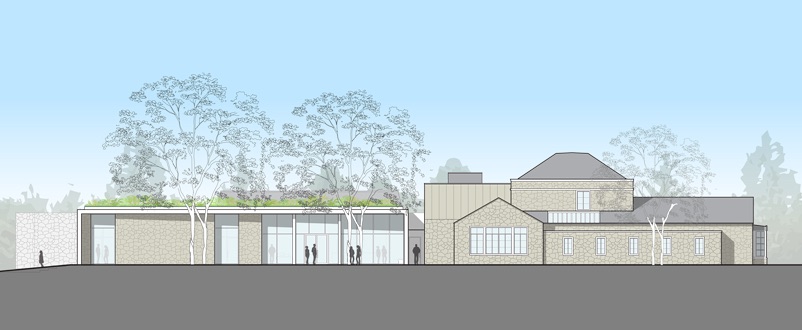 Can Scarsdale afford to build a state of the art library? That was the question at a meeting of the Finance Committee of the Scarsdale Board of Trustees on Tuesday February 9. A determined group of project proponents came to the meeting to press the trustees to approve a $12 million bond to fund the Village's share of the proposed $19.5 million renovation and expansion. Terri Simon, President of the Library's Board of Trustees explained that the board needs this commitment from the Village in order to raise the additional $7.5 million in private funds that they have pledged to contribute to the project.
Can Scarsdale afford to build a state of the art library? That was the question at a meeting of the Finance Committee of the Scarsdale Board of Trustees on Tuesday February 9. A determined group of project proponents came to the meeting to press the trustees to approve a $12 million bond to fund the Village's share of the proposed $19.5 million renovation and expansion. Terri Simon, President of the Library's Board of Trustees explained that the board needs this commitment from the Village in order to raise the additional $7.5 million in private funds that they have pledged to contribute to the project.
Simon announced that the Friends currently have gifts and pledges of $1.5 million with another $500,000 of private donations contingent on the Village's approval to fund the project. They are eager to move forward and hope to break ground one year from now in February 2017. She said, "We reject any suggestion that private dollars should come first; the Village commitment will give us the momentum we need to move forward."
Simon sought to explain why the cost of the project had ballooned from the original $12 million to the current estimate of $19.5 million. She said, "We did not permit the architects to design the Taj Mahal," and were "mindful of the cost concerns," saying that the Darien library was "over the top." She continued, "We wanted to serve our programmatic goals in a cost effective way."
The budget includes a total of $1.2 million in fees to the architects for design drawings and construction documents for the new library. The Library Board has already spent $310,000 on architect's fees from their budget and requires an additional $890,000 to move forward with the plans.
While the two-year renovation is in process, a temporary library would be set up at Supply Field. In order to build out the space on the second floor of that building and make it handicapped accessible, an estimated $750,000 would be spent on renovations in addition to $90,000 for construction documents. This project might also need to be put through a SEQRA Review to assess traffic and environmental impacts.
By maintaining library services, Scarsdale would remain a part of the Westchester Library System and residents would be able to borrow books from other libraries. The new Assistant Village Attorney Samantha Garrison said that another option would be for Scarsdale to contract with an area library to serve Scarsdale, but the fee would be based on usage. For example the Ardsley Library serves Elmsford residents at a cost of $250,000 per year and Cortland pays $600,000 for library service. The trustees asked if the Library Board had considered using the Weinberg Nature Center or a big box retail store on Central Avenue as a temporary facility.
Trustees asked Library Director Beth Bermel if there would be savings to the library budget during construction as the building would be closed. She said that the savings had not been estimated but that items like heating, electricity and staff hours should yield savings. It was not clear whether library staffers, who are civil service employees, were entitled to full pay during the renovation period, even if they were not able to work their usual hours.
According to the Village's Director of Capitol Projects Paul Zaicek, even if the proposed expansion did not go through, the Village would need to spend $4.5 million to repair and update the infrastructure of the library. Zaicek outlined potential costs for replacements and upgrades. On the list is a new roof, handicapped accessible bathrooms, a generator, asbestos abatement, HVAC equipment, lighting upgrades, masonry and repointing, $450,000 for furniture, fixtures and equipment, a wheelchair lift and audiovisual improvements.
Commenting on the option of repairing the current library, rather than moving forward with the expansion, Trustee Bill Stern said, "By repairing it we are throwing good money after bad. This would be shortsighted and doesn't bode well for the reputation of the Village of Scarsdale. This is not a good exercise."
Village Treasurer Mary Lou McClure reviewed scenarios for financing the project, examining the impact of a $12 million bond on the village budget. She explained that the Village's borrowing is regulated by state law that says the maximum financing period for a renovation is 15 year, while the maximum financing period for a new building would be 30 years. Borrowing $12 million at 2.75% for 15 years would raise the Village's debt payments by approximately $1 million dollars a year, translating to an average annual increase of about $150 per household and a 2.55% tax increase on Village taxes for 15 years. She presented analyses showing current and anticipated Village long-standing debt which would total $9.4 million through the year 2012 – without the $12 million library bond.
As the time grew short, the assistant village attorney discussed the regulations for bringing the decision to a vote of the entire community. Though the Board of Trustees has the power to pass the bond without a vote, Mayor Jon Mark indicated that the size of the project and its significance to the community might warrant a vote as a "concrete way to get community feedback."
Simon vociferously objected to a community vote saying, "The Library Board urges you not to avoid your authority as a Village Board. It is within your authority to authorize the bond. We think it would be shirking your responsibility as a Village Board to defer this to the voters. Take the bull by the horns, step up to the responsibility and do what you need to do for the community."
In a heated exchange, Mayor Mark responded, saying, "With all due respect, this board is not shirking their responsibility if it decides to put this up for a vote." Referring to information from the Library Board outlining similar projects in other communities, he said, "All of the project you show in your document were put up for a vote. Library bonding issues are common."
In his opening comments at the Board of Trustees meeting that followed the finance committee meeting the Mayor recapped what had occurred and added, "While this board and the Village staff are aware of other bond issuances by the school board that will impact taxpayers, these are not included in the analysis." He said that the finance committee and the Library Board would continue their analyses and hold additional meetings on the proposed project. He said that at this time the Village Board "has not reached any definitive conclusions," and encouraged residents to continue to provide their feedback.
In the public comments section of the Village Board meeting there were many comments in support of the project. Among those who urged the board to approve the financing were Lisa Messinger, Carl Pforzheimer, Harriet Sobol, Linda Chayes, Justin Aris, Laura Miller, Jill Spieler, Joyce Hirsch and Jill Spielberg. Several people had additional ideas about how the new facility could be better utilized by the community. Lynne Clark asked the Board to include a specially designated space for older residents to meet, calling it "Scarsdale Scholars," and Andy Wax brought a laugh to the audience when she came to podium to ask the Board to add a swimming pool to the proposed community hub.
CNC Nominating Process: Tradition vs. Practice
- Details
- Written by: Joanne Wallenstein
- Hits: 5162
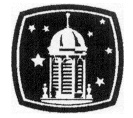 (This is an opinion piece from Joanne Wallenstein) Some residents who follow Scarsdale Village affairs were surprised when the nominations for Village Trustee were announced last week. More surprising than who was nominated was who was not.
(This is an opinion piece from Joanne Wallenstein) Some residents who follow Scarsdale Village affairs were surprised when the nominations for Village Trustee were announced last week. More surprising than who was nominated was who was not.
For the second year in a row, a Village Trustee who had served a first two-year term was not re-nominated to serve a second term. This year, Deb Pekarek, who appeared to have done a good job in her first two years, was not re-nominated for a second term. Deb was generally well liked, came well prepared to meetings, was diligent in her responsibilities as liaison to village committees and organizations and listened and responded to resident's concerns.
So why was she not re-nominated? The answer lies in the non-partisan process itself. In an explanation of the process on the Scarsdale Citizens' Non-Partisan Party website, it says, "By tradition, but not in the Resolution, is the practice of re-nominating a Village Trustee (but not the Mayor) who has served only one term, and to re-nominate the Village Justice (whose term is four years) regardless of the number of terms he or she has served."
Discussing the nominating committee's voting process the Non-Partisan Resolution says, "The election for each open office or position will be conducted separately, without reference to the name of the current occupant of an office or position, by separate successive vote for each open office or position until a person is selected for such office or position." The proceedings are run by representatives from the Scarsdale Forum and SNAP who are non-voting members and barred from expressing opinions on the candidates.
What does this language mean? Though there is a tradition to re-nominate standing trustees, there is no rule to guarantee it. Nowhere in the resolution or in the voting process is a standing trustee given preference. Even in voting for trustees, the names of all possible candidates are included on the ballot, and the committee votes without regard to who was formerly a trustee. There is no process by which an existing trustee is favored over a new candidate.
In recent years it has become hard to find candidates to run for the Citizen's Nominating Committee itself. These nominators are selected in contested elections and its tough to find people willing to place their names on the ballot for a general election. The Procedure Committee has to cast a wide net to find nominators and often begs people to run. Perhaps some who served on the nominating committee this year are not aware of some of the issues before the Village Board or how the trustees conducted themselves?
In the past it has also been difficult to find qualified candidates willing to take on the job of Village Trustee. It is a time consuming and complex job that is performed for free. So in the absence of new nominees it became the expectation that, barring malfeasance, a standing trustee who had served two years would be nominated to serve another two.
But apparently this year was different. The committee recruited several worthy candidates with good professional backgrounds and a history of service to the Village who were willing to throw their names into the hat. It appears that the CNC did their job, almost too well this year, and were able to attract some outstanding candidates who may have impressed the committee at their interviews. Their credentials were weighed against the existing trustees who were up for re-nomination.
What goes on in the deliberation process is confidential, so only the committee members know what went into their decisions. But we all can see the outcome.
The nominators evaluated their options, cast their votes and selected those who they found most fit for the job.
It's unfortunate that Pekarek, who did a good job for her first term, will be denied a second term. But on the other hand, the process worked as it was intended to, and the Village has two new trustees at their service.
Rather than viewing the vote as a miscarriage of justice, perhaps we should all express our gratitude to Deb Pekarek for two good years of service and accept the will of the committee that was in put in place through a fair process. Some fear that the committee's failure to re-nominate a standing trustee will deter others from running in the future—but that's an issue we will all have to face down the line.
For now we should be thankful that qualified residents have stepped up to deal with important issues before the Village, such as an expensive overhaul to the library, the need for historic preservation laws and consideration of thorny land use issues. There's work to be done, and fortunately we have qualified people to do it.










